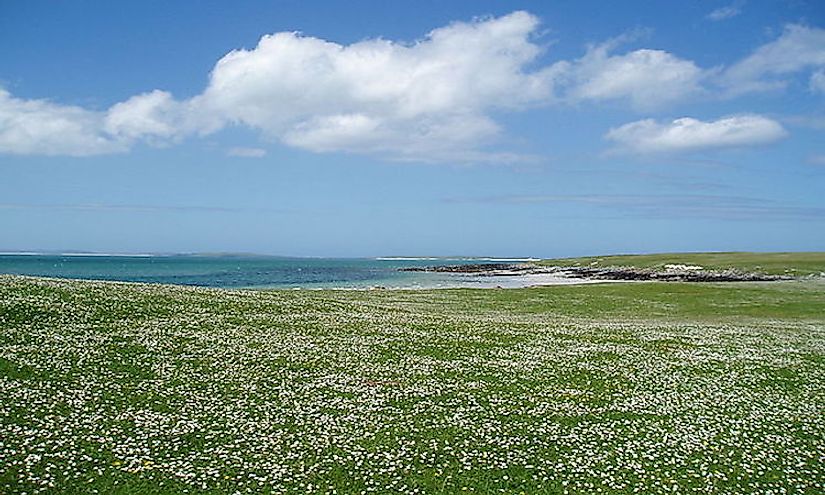Coastal Landforms: What Is A Machair?

What Is A Machair?
The word ‘machair’ is a Gaelic term that refers to an extensive low-lying and fertile plain. It has been recognized as a scientific term for a particular coastal feature defined by some dune pasture that is often calcareous, subject to local cultivation and is developed as a result of wet and windy conditions. Machair is one of the rarest habitats in Europe found in the North and West Britain and Ireland. The word is also used as place names in several locations in Scotland and England. Almost half of the machairs in Scotland are found in the Outer Hebrides. Machair sand has a high shell content up to 80%-90% which distinguishes them from the links of eastern coasts which are formed from more mineral-based sand. The links are typically high in silica content. The PH of a machair is typically more than seven implying it is alkaline in nature. This is as a result of high concentration of calcium carbonate. The inner side of a machair is often wet and contains loch.
Formation Of A Machair
The theory outlining the formation process of a machair was developed by William MacGillivray in 1830. He postulated that small fragments of shell carried by waves towards the shore where they are further broken up. The smaller fragments are blown up the beach to form hillocks which are then blown inland. Human activity is the other catalyst for the formation of machairs. The seaweeds that are deposited by farmers provide the protective cover and add nutrients to the soil. The grass is also kept short through grazing of cattle and sheep who add trample and texture to the sward.
The soil is also low in some key elements such as copper and manganese. This makes them inappropriate for grazing animals without the addition of mineral supplements. The sandy soils of the beach are not effective in holding the nutrients making the use of artificial fertilizers for crop cultivation impossible. This phenomenon limits the variety of crops that can perform well on these areas to oats and barley.
Ecology Of A Machair
The unique ecosystem has made machairs subject of several conservation efforts. They tend to house some rare species of flowers such as yellow rattle and carpet flowers. Some of the bird species that inhabit these regions include dunlin and twite as well as other rare species of insects. Kelp which is found in the sea helps to reduce the impact of the waves by reducing erosion whenever it gets washed up the shore.
The Current State Of Machairs
The machairs are increasingly facing different threats. Change in the ways of managing land is one of the threats. Grazing and improved farming have led to some of these areas coming under cultivation which is a threat to their existence. Rising sea levels as a result of global warming has led to increased erosion which affects the existence of the various species. The rising levels have also led to the gradual submergence of the low-lying coastal areas. In the process, animals have had to migrate while others die due to lack of ecological balance.











